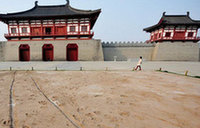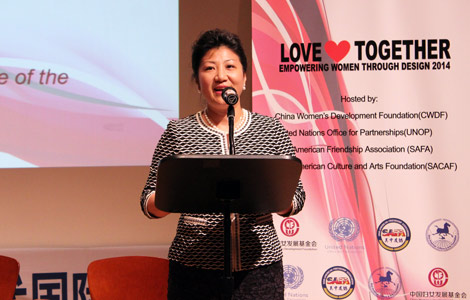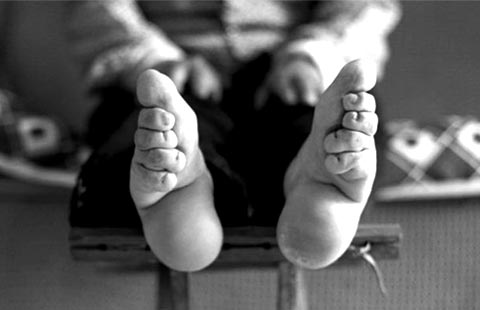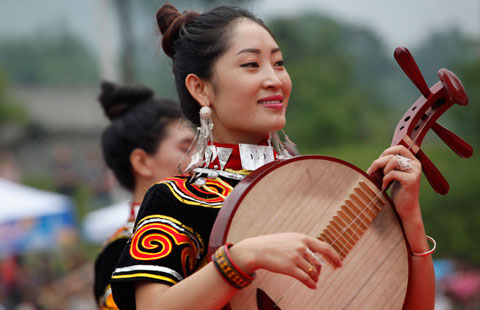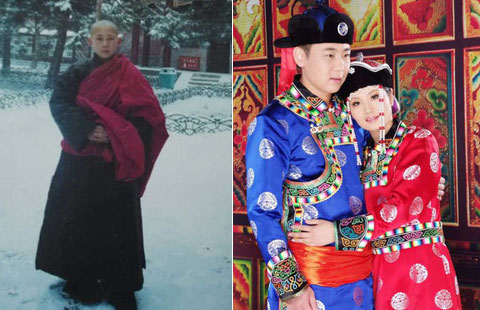Savoring find of chariots and horses
Updated: 2014-07-04 08:44
By Wang Qian in Jinan (China Daily)
|
||||||||
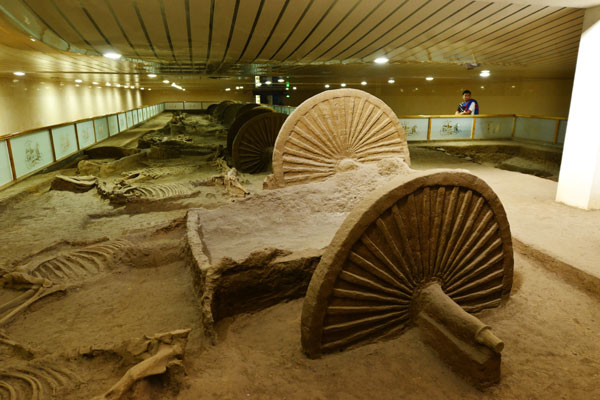 |
|
Remains of chariots and horses unearthed in a Spring and Autumn Period (770476 BC) tomb in Linzi, Shandong province. [Photo by Ju Chuanjiang/ China Daily |
Archaeologist Wang Yongbo, 61, still clearly remembers the day 25 years ago when he and his colleagues discovered a large ancient chariot and horse burial site in Linzi, Shandong province.
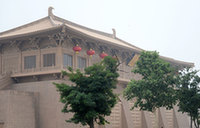 |
Remains of 38 horses and 13 carts lie in a 300-square-meter tomb from the Spring and Autumn Period (770-476 BC) on a river bank. Much of the carts' wooden frames and horse bodies have rotted away, but relics of wheels, bones and bronze decorations still remain, hinting at their once-mighty presence.
"It was spectacular! We were thrilled by the find as it was the first time such a large-scale chariot and horse burial pit had been excavated in the province," recalls Wang, a researcher with the Shandong provincial institute of cultural relics and archaeology.
In ancient China, the death of a royal or nobleman was often accompanied by the sacrifice of horses and chariots, to show the master's status and to help him on the last journey into the land of the immortals, Wang explains.
The tomb had once been robbed so most burial articles were missing, and its master has not been identified. "But the scale and burial style lead us to believe the master must have been a high-ranking official or a monarch during the Spring and Autumn Period," Wang says.
The site was included in the top 10 list of archaeological discoveries in China in 1990 by the State Bureau of Cultural Relics (now the State Administration of Cultural Heritage). Today, a museum has been built at the site of the remains, just 5 meters underneath an expressway connecting the cities of Jinan and Qingdao.
With a collection of relics, ruins and other displays, the museum tells the story of chariot-making in ancient China. It is regarded as one of the first and the most complete facilities of its kind in the nation, Wang says.

 Star Stefanie Sun holds concert in Beijing
Star Stefanie Sun holds concert in Beijing
 Faye Wong's manager refutes star's drug rumors
Faye Wong's manager refutes star's drug rumors
 Lu Yi and daughter Bei Er pose for street snaps
Lu Yi and daughter Bei Er pose for street snaps
 Photoshoots of actress Li Xiaomeng
Photoshoots of actress Li Xiaomeng
 Council of Fashion Designers of America Awards
Council of Fashion Designers of America Awards
 Fan Bingbing, first Chinese actress in Barbie Hall of Fame
Fan Bingbing, first Chinese actress in Barbie Hall of Fame
 Awarding ceremony of 2014 hito Pop Music held in Taipei
Awarding ceremony of 2014 hito Pop Music held in Taipei
 Zhao Liying's photo shoot for Children's Day
Zhao Liying's photo shoot for Children's Day
Most Viewed
Editor's Picks

|

|

|

|

|

|
Today's Top News
Ex-security chief Zhou Yongkang under probe
Prudence urged over solar dispute
US visa delays likely to continue
McDonald's fishing for supplier
OSI group to fund food safety
China's FDI in US set for increase
Glitch delays visas for US-bound students
A musical spoof of the Clinton years
US Weekly

|

|
